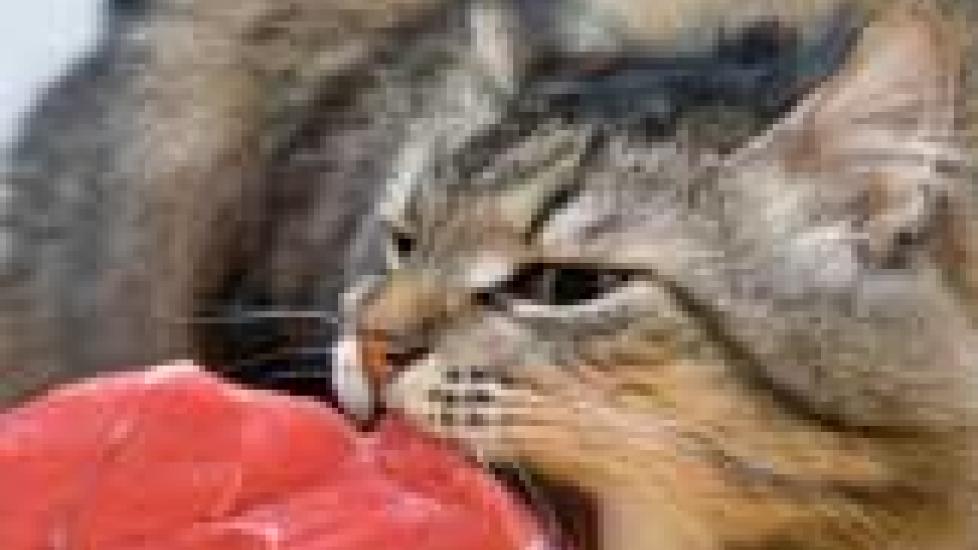The Pending Pet Nutrition Disaster
Due to popular feeding trends, veterinarians will soon be experiencing greater numbers of cases involving nutritional deficiencies. In their efforts to avoid certain ingredients deemed harmful or philosophically unacceptable, more and more pet owners are choosing homemade cooked or raw diets over commercial diets.
As most of you know, I agree with the homemade alternative. However, as my last couple of blogs demonstrated, there is more concern over what to leave out than knowledge about what to leave in. The web is rife with recipes for those seeking alternatives to commercial food. Unfortunately, most of these sources offer nutritionally unbalanced diets for pets.
What Do Pet Diets Need?
With the encouragement of President Abraham Lincoln, the U.S. Congress granted a charter for the private, nonprofit National Academy of Sciences (NAS) in 1863. The mission of this group of scientists is to provide research to further science and technology for the general welfare of the American public.
In 1916 the National Research Council (NRC) was organized by the Academy. With the Institute of Medicine, the NRC is the source for both human and animal nutrition research. Periodically, they update the Nutrient Requirements of Dogs and Cats. The Association of American Feed Control Officials (AAFCO) has superseded the NRC in setting the standards for the pet food industry.
Although both lists of recommendations differ slightly in quantities of daily nutrients, they are in general agreements as to what is necessary for a healthy pet diet. All commercial foods, whether canned, dry, or raw, must meet these requirements. The rules should be no different for homemade cooked or raw alternatives.
How to Balance Alternative Diets
First, specific food (rather than any generically lumped) sources and quantities (not percentages, guesstimates, etc.) must be established. All meats, carbs, oils, and vegetables are not created equal. Cuts of meats range from as low as 46mg of phosphorus per ounce to 97mg. The amount of the fat and linoleic acid varies, from meat source to meat cut.
Organ meats (liver, kidney) differ in their vitamin content from source to source and in the production method of the animal source. Different carbohydrates have different calorie, vitamin, and mineral content. Vegetables vary extremely in vitamins and minerals based on their plant family and color. This is why specificity is important. Once specified, the ingredients can be analyzed as a group by using the United States Department of Agriculture’s National Nutrient Database for Standard Reference. The result then must be reconciled to the NRC or AAFCO requirements. Properly feeding a pet is not a by-gosh-and-by golly internet exercise.
Supplements
All alternative diets need supplementation, even the raw diet that includes bone and organ meat. The above analysis allows knowing the quantity to supplement. This creates another problem because not all supplements are created equal. Bone meal is a good example. There are at least five readily available bone meal sources. None are the same. They range in calcium levels of 700mg to 1620mg per teaspoon, and 340 to 500mg of phosphorus per teaspoon. If a recipe does not specify the bone meal brand then the recipe could be deficient or excessive in calcium and phosphorus.
The ratio of those ingredients is also important. It needs to be about 1.2 to 1.5 calcium to phosphorus. Without knowing precisely how much of these ingredients are in the diet, let alone the bone meal supplement, the ratio is completely unknown
Vitamins and minerals are even worse. Every company has its proprietary blend that varies enormously from brand to brand, including children’s supplements. Most homemade recipes suggest supplementing with any vitamin mineral supplement. Again, without knowledge of the recipe and supplement content, the adequacy of the diet for vitamins and minerals is completely unknown.
Don’t Just Take My Word for It
A recent study published in the Journal of the American Veterinary Medical Association (JAVMA) found that homemade cooked or raw recipes from popular websites and books (some authored by board certified veterinary nutritionists) did not meet the daily requirements established by the NRC for many ingredients.
The Disaster
Nutritional deficiencies are not acute. They take their toll over time — years to a decade — before their effects are evident. Moreover, the symptoms are not always specific and will not be reflected in the routine blood analysis performed in veterinary hospitals. Many nutrients do not even have specific blood analysis capabilities.
Because all commercial foods are quantitatively nutritionally balanced, most veterinarians do not have nutritional deficiencies on their diagnostic radar. Many clients don’t tell us they feed homemade. Most veterinarians are not well versed in nutrition and are not capable of assessing the nutritional status of these diets. And even if accurately identified, supplementation may not reverse the damage. Combine these factors, and the trend toward unbalanced, homemade cooked or raw diets, and I predict that nutritional deficiencies may become as common as the other malnutrition syndrome, obesity.

Dr. Ken Tudor
Learn More
DVM360; Homemade Diets for Cats and Dogs with Kidney Disease: Most Recipes are Wrong
AVMA.org; Policy on Raw or Undercooked Animal-Source Protein in Cat and Dog Diets
Image: Yutilova Elena / via Shutterstock
